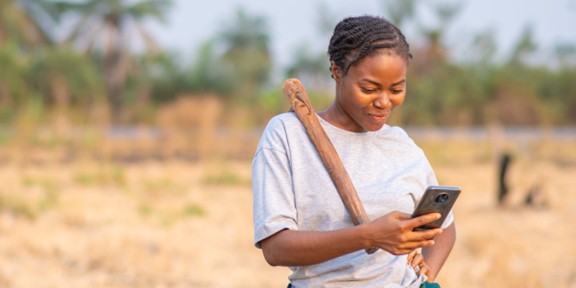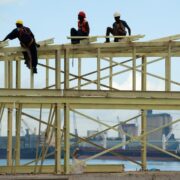
- Africa’s mobile broadband rate rose from 20% in 2015 to 52% in 2023
- Internet use remains lowest globally at 38% in 2024, vs. 68% global average
- High costs, poor infrastructure, and urban-rural gaps hinder progress
Africa’s mobile broadband subscription rate rose by 160% between 2015 and 2023, climbing from 20% to 52%, according to the International Telecommunication Union (ITU). Despite this growth, only 38% of the population used the internet in 2024, the lowest penetration rate globally, well behind the global average of 68%.
Mobile broadband remains the main access point to the internet across the continent. Yet Africa’s 52 subscriptions per 100 people remain far below the global average of 95. The growth masks sharp disparities, Mauritius, South Africa, and Eswatini exceed 100 subscriptions per 100 people, while countries like Chad and the Central African Republic remain far behind.
Fixed broadband access is nearly absent. In 2024, fewer than one in 100 Africans had a subscription, compared to 18 per 100 globally. Only Seychelles (31 per 100) and Mauritius (27 per 100) surpassed global benchmarks, while nearly all other countries recorded fewer than 4 per 100. Limited infrastructure, including the fact that only 30% of Africans live within 10 km of a fiber node, hampers deployment.
Cost is a major barrier. In 2024, a 2GB mobile plan cost 4.2% of Gross National Income (GNI) per capita, more than double the UN Broadband Commission’s 2% target. Though an improvement from 7% in 2018, affordability remains a challenge. In 17 countries, mobile data costs exceed 5% of GNI, while fixed broadband averages 15% for 5GB. Only Seychelles, Mauritius, and Eswatini met the affordability target.
Network coverage also shows gaps. While 86% of the population had at least 3G access in 2024, only 71% were covered by 4G, compared to 92% globally. Coverage reached 73% in urban areas but only 49% in rural zones. A quarter of rural residents had no access at all. Just 11% of the African population had 5G coverage, against a global average of 51%.
Low connectivity has limited data use. Mobile broadband users averaged 3GB per month in 2024, up from 0.9GB in 2019, yet still below the global range of 6–14GB. Fixed broadband data use rose from 77GB to 159GB in the same period, while the global average reached 311GB in 2024.
ITU data groups African countries into five tiers. Mauritius and Seychelles lead, with mobile (102.6 per 100) and fixed (28.8 per 100) rates above global levels. A second group of 14 countries has mobile rates near global levels (71.8) but low fixed access (2.2). A third group of 20 countries trails with 48.3 mobile and 0.6 fixed subscriptions. Guinea-Bissau, Madagascar, Malawi, and Uganda fare worse, with 43.1 mobile and 0.2 fixed subscriptions, and poor affordability. Burundi, the Central African Republic, Chad, and South Sudan record the lowest connectivity, with just 7 mobile subscriptions per 100 people and almost no fixed broadband.
The ITU calls for renewed public and private investment in African broadband, focused on affordability, infrastructure, and bridging regional divides.









Comments